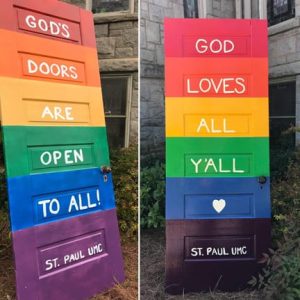By Stephen Turner
Grant Park, the oldest public park in the entire city of Atlanta, has its own unique history that very few people actually know. Many native Georgians are surprised to learn about its sordid past. From the aristocratic to the downright shady, Grant Park has served as an important center for Atlanta’s residents. Historians have long argued the authenticity of much of this article, however in order to bring you the best story possible, we disregard actual historical facts and journalistic accuracy. This is Grant Park we are talking about after all.
This park began as a piece of land, and technically it has remained as such to this day despite the many changes over the decades. Top scientists, geologists, surveyors, engineers, and local history buffs can all agree with little dissent that Grant Park is still a piece of land. That part of the story has not changed. In 1883, the land was given to the city of Atlanta for public use simply for being a piece of land. And in 1890, the city acquired another 44 acres adjoining so that they could have bragging rights that they had a “gross of land,” or 144 acres in total.
Grant Park was born just 18 years after the end of the Civil War that devastated Atlanta at the hands of the alleged pyromaniac General William Tecumseh Sherman. Atlanta at that time had no love for those Yankee invaders, pillagers, looters, and arsonists. If Atlanta had no love for the Union cause or its heroes, why then was it named Grant Park? Ulysses S. Grant was one of the most hated Yankees in the last years of the war and again as President during Reconstruction. It is a misconception because the park was not named for President Grant.
Some speculate that the park got its name from the very thing that funds the park, grant money. The park seemed to generate money in other ways, so could it have been named Carwash Park, or Bake Sale Park, or perhaps even Second Mortgage on the Home Park? The answer to that is simply no. While the land was granted to the city, the name is not derived from the gifts of land. So that still begs the question, how did Grant Park get its name? Amy Grant? Cary Grant?
The answer to the name Grant Park goes back to the original owner of the land, Lemuel Grant. Although we must correct a statement just made, there is no way Lemuel Grant, a prominent engineer, could have been the original owner despite holding the physical deed on the land. The indigenous peoples of Georgia actually owned the land. When Georgia was settled by the English and later the Americans, the white settlers took it as their right to take and pilfer and steal the land as they saw fit and since the land was basically stolen property, could Mr. Grant grant Grant Park to the city, giving them a piece of land he didn’t actually own in the first place? It would be like passing off stolen wares at the neighborhood yard sale or putting counterfeit money in the donations box or the collection plate. But alas the park wound up in the hands of the city.
Authorities in Atlanta had to bring in park planners to plan the park because you don’t want trees just growing anywhere in a sprawling 144-acre park. Every detail of the park had to be meticulously devised. This was never more evident than when the Olmsted Brothers, the park planners, decided that there needed to be a lake on the property to handle storm run-off. In essence what the Olmsteds did was to take a part of Grant’s stolen Indian land and drowned it with rainwater. The pond was a permanent fixture of the park until eventually they had to get rid of part of the pond to build a parking lot, because that is good park planning.
But what of the zoo? Being that Zoo Atlanta is a major draw to the city, it would seem at least somewhat important enough to write about it in an article about Grant Park, wouldn’t it? This is the part of the article you have actually been trying to get to because parks are boring without wild animals in cages. In 1889, George Gress, a lumber dealer bought a large number of previously owned and slightly used animals from a Going Out of Business Sale of a failed circus. Those circus animals became the first zoo attractions at Grant Park that were more than just a dog with antlers tied on or a cow with painted stripes. This was a legitimate zoo. And the zoo continues to this day featuring such wonderful exhibits as the Chinese Pandas and Willie B, the gorilla that won this writer’s heart as a child.
In 1892, the World’s largest painting was put on display in Grant Park depicting the Battle of Atlanta. What was special about this painting was that it was circular meaning the viewer had to walk around to see the whole painting. Many of the park’s visitors did not like spinning or walking around in circles trying to look at the whole painting. Dizzy spells a plenty had Atlanta’s high society walking sideways and tripping over their own dresses trying to catch a view of the painting. Eventually the cyclorama was built for all of the dizzy and lazy people who didn’t want to walk around the painting anymore. The Cyclorama as it would later be called would spin the entire audience around to see the painting. The Cyclorama became a Grant Park permanent fixture in 1921. The major problem of the painting was the gruesome reminder of the War that had ended some 55 years ago and had taken so many lives on both sides.
Grant Park has come such a long way in the past 135 years, and for an old gal she still looks good. Of course the park and the surrounding neighborhoods have had some work done. A little reconstruction here and there but all in all the park is in great shape and a staple of anyone’s guidebook of Atlanta.
The Monthly News Monthly would like to thank The Porch Press for giving our news service an opportunity to inform and delight readers of this publication. If you feel led to do so, please inform the goodly people at The Porch Press that you would like to see more stories like this or email us directly at nightlynewsnightly@gmail.com. We are available for sponsored events and speaking engagements.






Comments are closed.